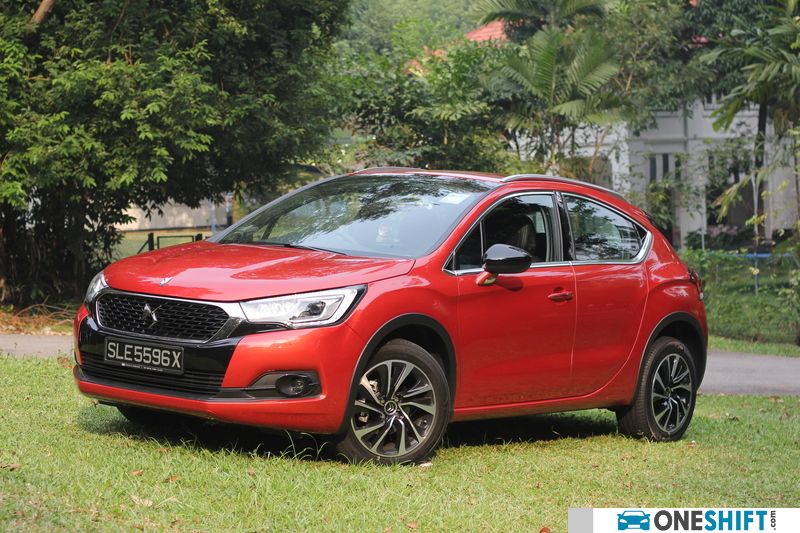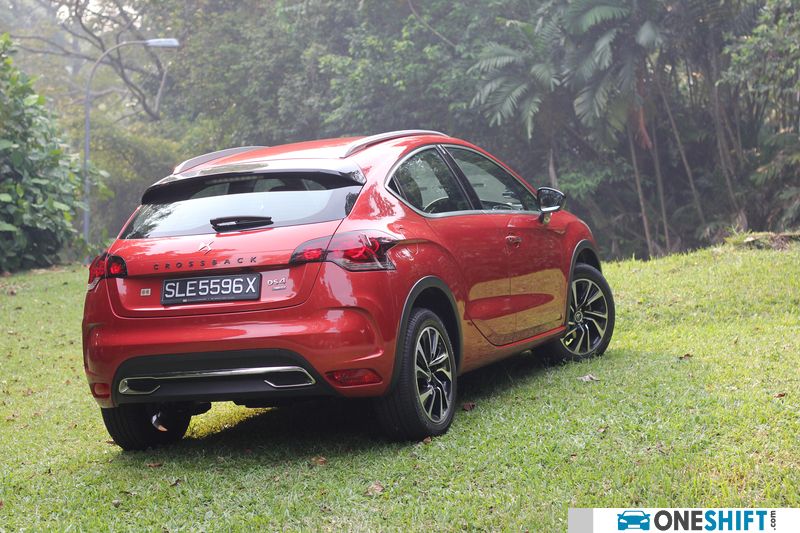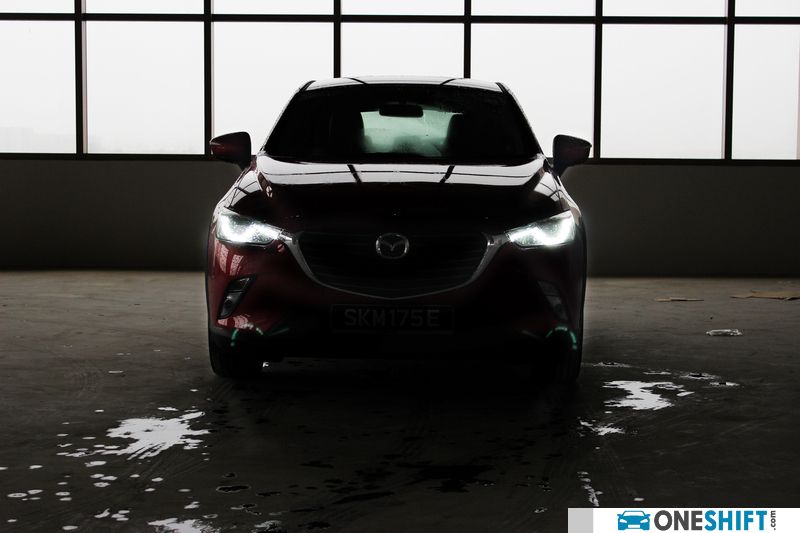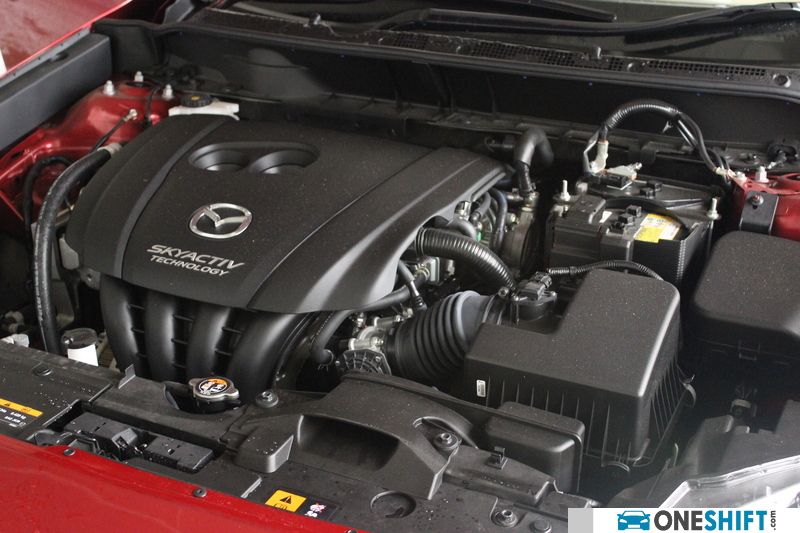Crossed Over
Becoming less of an oddball, and more accepting to the public eye, the part hatch, part coupe, part SUV has almost become a mainstay on today’s roads.


Becoming less of an oddball, and more accepting to the public eye, the part hatch, part coupe, part SUV has almost become a mainstay on today’s roads.
The DS4 Crossback is really a heavily disguised hatch, with an off-roading inspired design. Based on a vanilla DS4, with additional ride height and black plastic cladding around the wheel arches, and additional black text provides some hint of off-roading capabilities.
The Mazda CX3 on the other hand, sits on their 3 Sedan platform, and like the DS4, sits higher than most ordinary road cars. Black plastic covered wheel arches portray a rugged look, suggesting that you can simply turn off the road and take this thing for some light mud plugging.


But in reality, both cars are just road vehicles, made out to look like off roaders. I can almost hear the term “poser” in some of your heads now. Yes, front wheel driven hatchbacks really.
Styling-wise the Crossback looks like it came straight from the prototype’s drawing board, and made into reality. Quite evident from the rear windows being unable to roll down (I kid you not here), and that not too much care was taken with the rear door handle design. Like the Honda HRV, they are tucked away neatly into the C pillar, but open with the housing, which forms a sharp angle which might bop the heads of unsuspecting younger rear occupants, as they attempt to enter the car. We do however appreciate the attention to detail on the sculpting of the body. Nicely pinched lines and shapes makes the DS a treat for the eyes from many angles.


The CX3 does not fall too short in terms of looks. Though it does look more hatch than crossover, the front end treatment carries their current design language. A large chromed grille meets aggressive headlamps. Flowy lines subtly create the car’s side identity, and end with a Mazda 2-ish boot.


The interiors of both cars also display very different ideas of how a compact crossover should look like. Stepping into the DS, you are greeted by a large steering wheel, which would likely feel more at home in their DS5 people mover. I do however appreciate that the designers have made the bottom of the steering wheel flat, which helps with making the car a little easier to steer around tighter spaces. The dash is largely black, accented with bits of chrome. Materials used though, could have had a little more thought put into them, as some of them seem a little brittle, or easy to wear down.
For some spoils, the car comes with digitised dual-zone climate control, pushing cooled air out from chrome rimmed air conditioning vents. The instrument binnacle consists of three clusters which display your road and engine speed, the gear you are in, and some basic car data, and you are able to change the colours of the display. Unfortunately, the way the transparent covers are placed on the dials, do reflect light into your eyes on brighter days, hence obscuring your readings.


The infotainment system does provide some information of the car, and does also provide phone connectivity.
For a little touch of fun, the guys at DS have also provided more upward vision with a panoramic windscreen, allowing occupants to extend their view upwards by 45 degrees. Good for clear nights with stars, or when you want to get a little more sun.
Mazda has also kept their instrument binnacle as a tri-podded design where the central unit displays the rpm. The speed is displayed on a small section, carved out within the rev counter. The Deluxe trimmed test car came equipped with a head’s up display which provides speed readings, making it easier for the driver to catch the speed at a glance.


The air conditioning unit is a conventional manual unit, which is controlled by three huge knobs located in the middle of the dash.
The Mazda sports a tri-colour design for its dash, with white and red making up parts of the look, which includes a white bar below the air conditioning vents, which span from the passenger’s side to the steering.
The CX3’s infotainment system sits proud on the top of the rather flat dashboard, providing car information and phone connectivity. Controls for the system are located beside the handbrake, and only need a short while to get the hang of.


Both cars offer seats which are comfortable enough to eat out long journeys, while the DS comes with electric seats with driver’s side massage function; it really feels like the lumbar support motor moving forward and backwards.
Rear cargo room for both cars are close, with the DS winning Mazda’s 350 litres by 35 litres. Seats for both cars fold down in a 60/40 format, but could equally frustrate users, due to the bump they leave when doing this.
Looking at the added ride height from a user standpoint, presents hatchbacks with cargo areas which are easy to load, and the higher ride height would mean that there is that added advantage to see a little further ahead in heavy highway traffic, allowing you to make that crucial decision to turn off or stay on the highway.
The DS4 Crossback comes equipped with a 1.6 litre turbocharged diesel engine, mated to a very effective 6-speed automatic. Truly an advantage, with maximum torque made available from 1,750rpm. The advantage of producing the 300Nm at such a low rpm, means that getting ahead, in light traffic, and overtaking are a breeze with this car. Fuel savings come from the engine being able to keep at sub 2,000rpm while driving at highway speeds.


The Mazda on the other hand relies on a 2.0 naturally aspirated petrol engine, also mated to a 6-speed automatic. Very pleasantly, we found that the engine produces its maximum torque of 204Nm form a low of 2,800rpm.


Although power delivery for both cars are very different, with the DS feeling more reactive, the Mazda is actually faster hitting the century sprint timing at 9.5 seconds, while the DS takes a slightly more leisurely 11.4 seconds to do the same.
But overall after pitching both cars around a few tight corners, we come to realise that the CX3 tends to have better steering and is more nimble. Body roll is evident, due to the ride height, and you do get some frontal plough.
The DS on the other hand does take to the bends with some roll as well. Steering feel is not as crisp as the Mazda’s and the car does feel a little more unsettled with multiple directional changes.
Overall, both cars present very attractive propositions. But we must give the Mazda CX3 the win, because it really is designed as a car and not as a very pretty prototype without non-functional rear windows rushed into production.

Credits:


Get the Best Price for your used car
from 500+ dealers in 24 hours

- Convenient and Hassle-Free
- Consumer Protection
Transparent Process
With No Obligation








